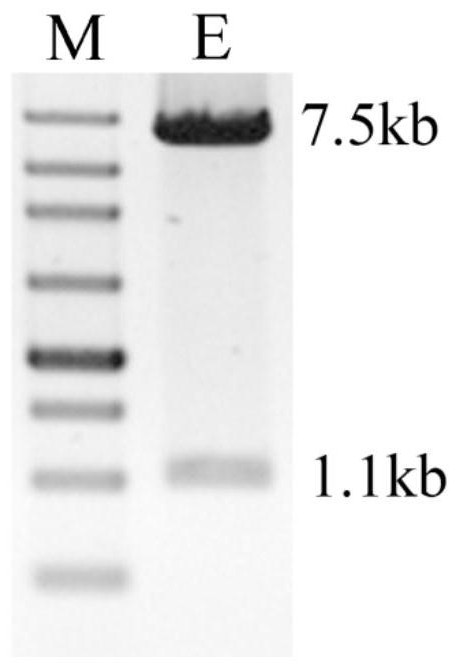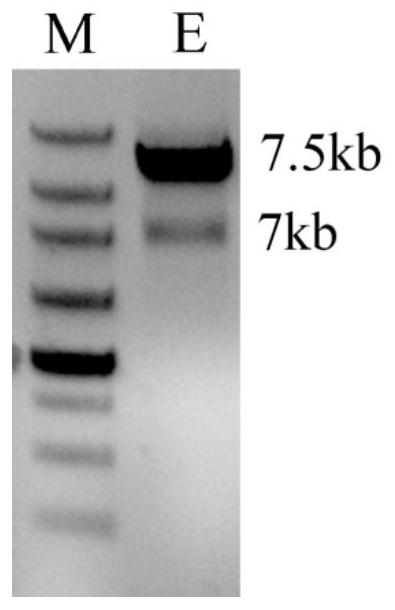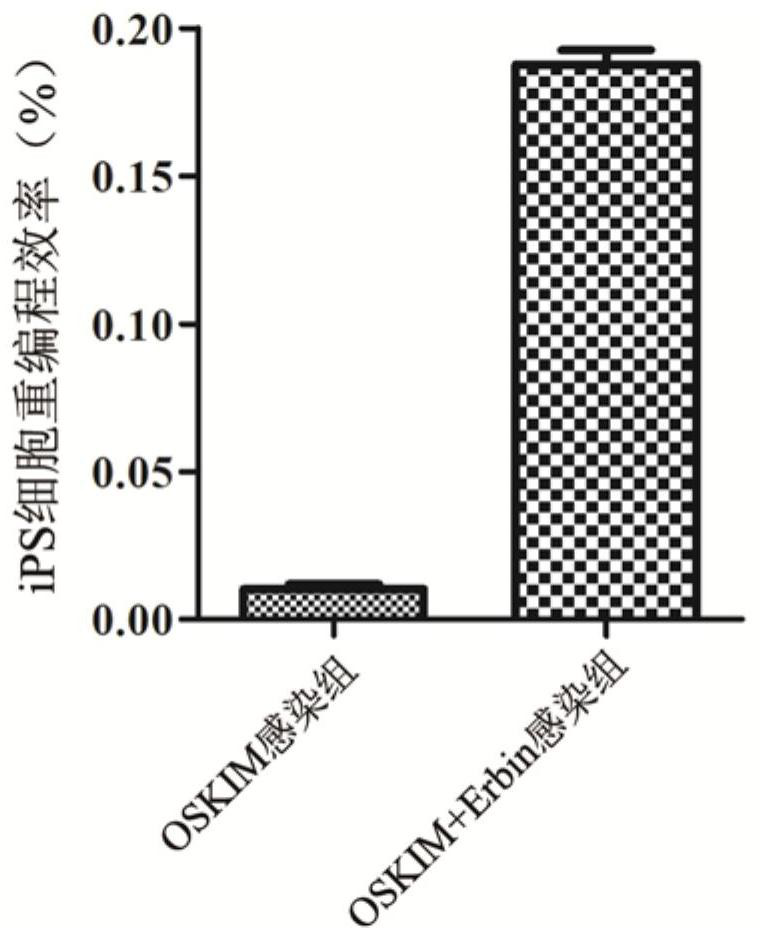Induced pluripotent stem cells, preparation method and application thereof
A pluripotent stem cell and inducible technology, applied in the field of induced pluripotent stem cells and its preparation, can solve problems such as uncontrollable, target gene integration site, insertion copy number cannot be artificially controlled, random transfection, etc.
- Summary
- Abstract
- Description
- Claims
- Application Information
AI Technical Summary
Problems solved by technology
Method used
Image
Examples
preparation example Construction
[0047] A method for preparing induced pluripotent stem cells (iPS) according to one embodiment includes the following steps S110-S120.
[0048]S110. Introducing transcription factors and Erbin gene into skin fibroblasts, wherein the transcription factors include Oct4, Sox2, Klf4 and c-Myc.
[0049] In one embodiment, the skin fibroblasts are human skin fibroblasts. The iPS preparation method of this embodiment can realize the reprogramming from human skin fibroblasts to form human iPS cells, and the reprogramming efficiency is high.
[0050] Among them, the Erbin gene is a new type of gene located on the long arm of human chromosome 5, and the protein expressed by it is referred to as Erbin protein (Erb B2-interacting protein).
[0051] In this embodiment, the sequence of the Erbin gene can be found in NCBI database NM_001253697.1.
[0052] The combination of four transcription factors, Oct4, Sox2, Klf4 and c-Myc, referred to as OSKM, introduces OSKM into somatic cells, whic...
Embodiment 1
[0104] Construction of lentiviral expression vector pSin-EF2-Erbin
[0105] The lentiviral expression plasmid pSin4-EF2-Oct4 (Addgene, 16579) was digested with EcoR I and SpeI, and the bands were separated by agarose gel electrophoresis. The electrophoresis pattern of enzyme digestion products is as follows: figure 1 As shown, there are two clear bands at about 7.5kb and 1.1kb respectively. A 7569bp fragment was recovered by cutting the gel (AxyPrep DNA Gel Recovery Kit), which was the lentiviral expression empty vector pSin-EF2, which was used to construct the lentiviral expression plasmid.
[0106] The gene encoding Erbin (NM_001253697.1) was artificially synthesized, restriction enzyme sites EcoR I and SpeI were added at the 5' end and 3' end respectively, and the gene fragment was cloned into the lentiviral expression empty vector pSin-EF2 to construct The lentiviral expression vector pSin-EF2-Erbin was obtained. The constructed pSin-EF2-Erbin lentiviral expression plas...
Embodiment 2
[0108] Preparation of lentivirus carrying Erbin gene and lentivirus carrying transcription factor
[0109] According to the instruction of Invitrogen Lipofectamine 3000 transfection kit, the pSin-EF2-Erbin plasmid and the lentiviral packaging plasmid PMD2.G (Addgene, 12259) were transfected into 293T cells, cultivated and collected the culture supernatant to obtain the target gene Erbin. Lentivirus (Erbin Lentivirus)
[0110] According to the instruction of Invitrogen Lipofectamine 3000 transfection kit, pSin-EF2-OKSIM (Addgene, 124603) and lentiviral packaging plasmid psPAX2 (Addgene, 12260) were transfected into 293T cells, and the culture supernatant was collected to obtain lentiviral cells carrying OKSIM. Virus (OKSIM lentivirus). Among them, the pSin-EF2-OKSIM plasmid contains the four genes Oct4, Sox2, Klf4 and c-Myc, and the I in the middle represents IRES, which is the internal ribosome entry site sequence (Internal ribosome entry site, IRES), and its function is to i...
PUM
 Login to View More
Login to View More Abstract
Description
Claims
Application Information
 Login to View More
Login to View More - R&D
- Intellectual Property
- Life Sciences
- Materials
- Tech Scout
- Unparalleled Data Quality
- Higher Quality Content
- 60% Fewer Hallucinations
Browse by: Latest US Patents, China's latest patents, Technical Efficacy Thesaurus, Application Domain, Technology Topic, Popular Technical Reports.
© 2025 PatSnap. All rights reserved.Legal|Privacy policy|Modern Slavery Act Transparency Statement|Sitemap|About US| Contact US: help@patsnap.com



